Hotplates and magnetic stirrers are utilized across a wide spectrum of laboratories for heating, blending, and mixing.
Constant advancements are being made to increase the functionality and range of laboratory hotplates and stirrers, and it can be difficult to make broad statements.
The following three considerations apply generally to the product family.
What makes a hotplate or stirrer safe to use?
Like all electronic devices, choose a hotplate or stirrer with certification from a reliable testing agency. Underwriters Laboratories (UL) listed products are an industry standard which can be depended on.
Look for a smooth, chemically resistant ceramic top and avoid hotplates with pocked or damaged surfaces.
The hotplate or magnetic stirrer electronic components should be sealed to prevent spilled liquids from seeping inside and potentially causing shock or a fire.
A safety conscious hotplate will have a heating indicator light to visually confirm the device is on and hot to the touch.
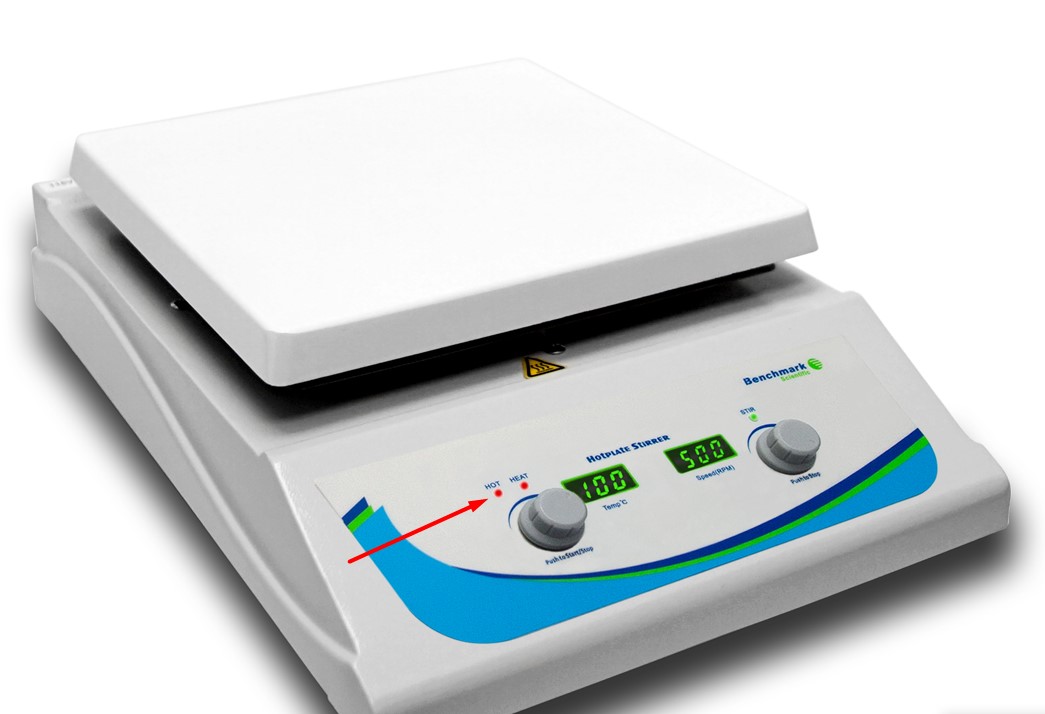
The Ohaus Guardian 7000 line of hotplate stirrers can be programmed to automatically shut off heating if no one is detected within its perimeter for a specified period.
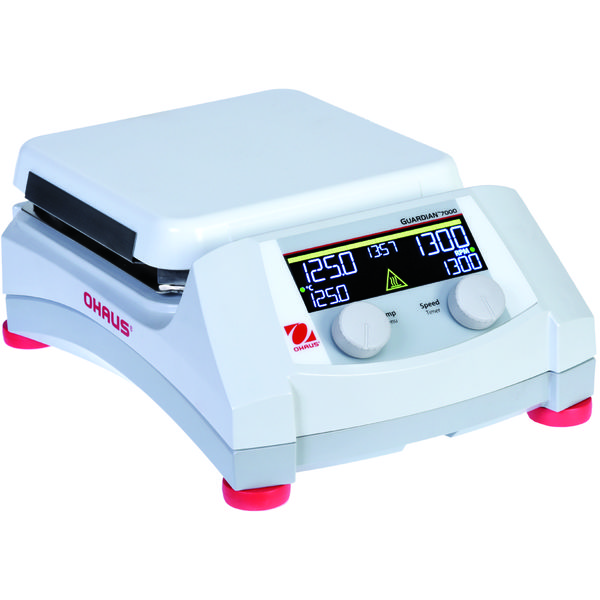
Better quality hotplates and stirrers are programmed to slowly ramp up stirring speed to reduce the risk of splashing and build a stronger coupling between the stirrer motor and the stir bar.
How is the hotplate temperature controlled and monitored?
Hotplates can heat up to 550C (and perhaps newer models even hotter still). By what temperature increments is the hotplate adjusted? How precise can it get?
How is the actual temperature verified? Even digitally controlled hotplates only display the temperature of the heating surface.
When using an analog hotplate, inserting a thermometer into the solution will confirm the actual temperature of what it being heated or mixed.
Digital hotplates offer a temperature probe accessory to record the actual temperature and report to a microprocessor that then makes small adjustments automatically.
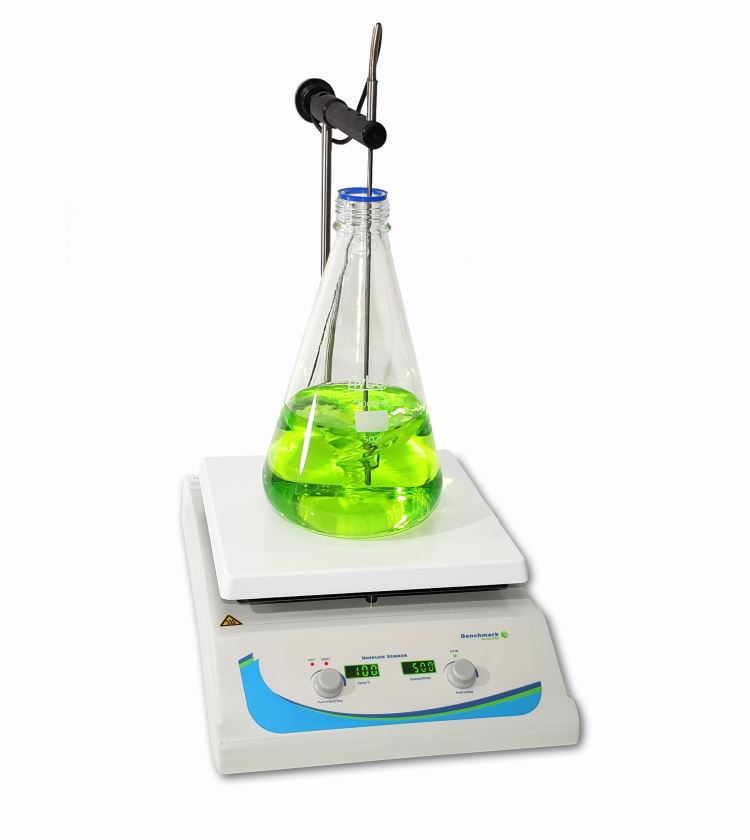
How much liquid or volume can be heated or mixed with this hotplate or stirrer?
When preparing small volumes, a compact hotplate or hotplate stirrer with a surface measuring a few inches in diameter works just fine.
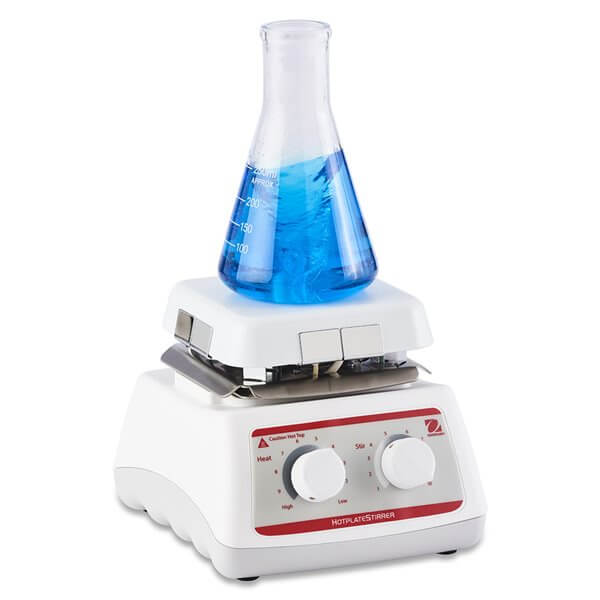
Vessels one liter in size and larger require greater surface area.
Many popular sized hotplates and stirrers have a diameter of seven or ten inches across.
Alternatively, a hotplate or stirrer with multiple positions is a great choice when preparing several iterations at once.
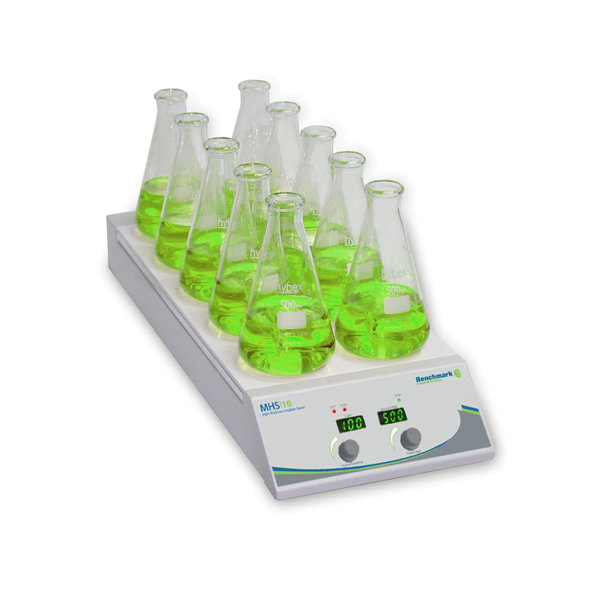
Choose a high-capacity stirrer with a powerful motor when mixing volumes 50L or larger.
Highly viscous solutions may require a high-capacity stirrer to generate the necessary force to mix the solution.


